Poker Gets an Injection of Fun Thanks to Poker Night in America and 888
With the help of their primary sponsor, 888Poker New Jersey, Poker Night in America is bringing the fun back to poker.
My own experience on Poker Night in America was not only fun (it was incredibly fun and exciting) it reignited my passion for the game. This isn't me spewing hyperbole either. I was back at Foxwoods the next weekend (the first time in close to a year), and I've been setting up a home game for the following weekend. Because of Poker Night in America and 888, I want to play poker again.
As legal online poker continues to spread in the U.S., and as Poker Night in America viewership grows, the show could have the same effect on the millions of people who first fell in love with the game during the poker boom but are turned off by the drudgeries and monotony of the modern poker world.
These people fell in love with poker in 2003 because it was fun. They broke up with poker when it became boring.
When poker was fun
Most of us don't take up the game of poker to become pros or line our pockets. We all want to win when we play, but we play poker because it’s a fun way to test our mental acumen against friends, family, and if you're bold enough, complete strangers.
Most poker players never enter a casino, often risking somewhere between $10-$50 when they get together with their friends. To the vast majority of people, poker is first and foremost a social endeavor.
This dynamic was on full display during the early days of the poker boom when players like Phil Laak, Antonio Esfandiari, Daniel Negreanu, and Phil Hellmuth captured the imagination as they interacted with and needled one another, and engaged the other players at the table.
Poker used to have vibrant characters at every final table. At the 2003 WSOP final table you had the boisterous Amer Vahedi with his Cheshire cat grin and unlit cigar, and the cool as a cucumber Sammy Farha. During Season 1 of the WPT it was Scotty Nguyen, the Devilfish, Tony G, and Gus Hansen that people wanted to see.
People who hadn't played poker in years watched the players competing in the WPT and the WSOP having fun, and then got together with their friends and replicated what they saw on TV … for much lower stakes.
Except for the stakes, what you saw on TV during the early days of the poker boom looked a lot like your typical kitchen table poker game. Stories were told, people poked fun at one another, and even though most people left the table down money, they had a good experience. They got their money's worth so to speak.
Poker pros go completely off the rails
But as the poker boom wore on, and more and more money was injected into the poker economy, more and more players started looking at poker as a cash cow, even at smaller stakes games.
With more players trying to get a piece of the poker pie, the demeanor and attitude of the new crop of professional players changed. Everything became about +EV and exploiting small edges. The old skills of attracting players and keeping the atmosphere light were no longer necessary.
The foundation laid down by the old school pros was tossed aside and ridiculed. Many pros started bundling up in parkas and hoodies - some even wear scarves now. They donned sunglasses and headphones and ceased all interaction with the table in order to maximize their hourly rate.
What they failed to realize was the effect this would have on potential players.
This is not what casual players want to watch or participate in, and it's certainly not what they want to replicate with their friends at home. Home games in 2004 were full of booze, laughter, and most importantly players. In 2015 fewer home game players are drinking (it's -EV to drink while you play poker) and quite a few wear headphones! Headphones! While they're sitting around a table with their friends.
Unsurprisingly, there is less laughter and less players (in brick & mortar poker rooms and in home games) these days.
And now, a lot of poker pros are realizing how important it is to create a good gambling atmosphere.
PNiA steps up and fills the void
Poker Night in America is a TV show that combines elements from High Stakes Poker and Celebrity Poker Showdown, with a dash of PokerStars Big Game thrown in thanks to the show's primary sponsor 888 Poker New Jersey.
Like High Stakes Poker, PNiA is a cash game with big name pros filling most of the seats. Unlike HSP, PNiA isn't played for astronomical stakes ( just throw up stakes) as PNiA is a $25/$50 NLHE game, whereas High Stakes Poker featured $300/$600 blinds with a $100 ante.
Like Celebrity Poker Showdown the atmosphere at the table is very friendly with a lot of laughing and occasional, accepted, breaches of poker etiquette without screams of "FLOOR!" The game has a "home game" feel to it, and the atmosphere is extremely informal.
And like PokerStars Big Game, PNiA's main sponsor, 888 Poker, sends qualifiers to the game. These players are taken out of their comfort zone and playing for stakes they would never dream of, which creates a relatable dynamic for the viewers at home, and gives them a rooting interest on the show.
PNiA may have borrowed the best aspects of proven poker shows, but they have also innovated and embraced modern advancements in poker as well. This isn't a cookie cutter poker product. Far from it.
Edited episodes of PNiA air on cable TV (CBS Sports), but the show also has a dedicated live stream on Twitch for poker enthusiasts interested in seeing every hand in real-time. The lineups are carefully selected and players can't hide behind sunglasses and hoodies, and take 10 seconds on every pre-flop decision or they'll be culled from PNiA's rolodex.
Basically, like the high stakes cash games in Macau, if you're not fun, or good for the game, you won't be invited back, no matter how good of a player you are.
As PNiA co-creator Todd Anderson told me, the show's goal is to recreate the home game environment from 2004 and remind people you can play poker for money and it can still be fun. "The table is the entertainment," Anderson stated.
Anderson, explained the show's premise thusly: "The stakes, $25/$50, are small for most of these guys and that's by design, as it allows for a home game environment with needling and plenty of table talk. 90% of the players favor it."
Anderson went on to say that the show, now in its third season, has gotten better at choosing lineups, specifically focusing on players who are familiar with one another (whether friends or enemies) in order to bring an interesting dynamic to the table and create more chatter at the table.
This is the type of dynamic many casual players find in their own home games, the only difference being the stakes are probably closer to $.25/$.50 than PNiA's $25/$50 blinds.
And that's where the amateur experience comes into play.
888
As I found out firsthand, because of 888 Poker's involvement not everyone on PNiA is playing in their comfort zone. 888 sends qualifiers and representatives to the play in the game, most of whom, like me, would never dream of sitting in a $25/$50 NLHE cash game.
As big as the game was for me it was still a blast. If I had gone busto I would have still had an incredible time, the fact that I won a little bit of money was just icing on the cake.
The 888 qualifiers create yet another appealing dynamic for the casual viewer, as they can put themselves in the shoes of the qualifier and root for the underdog. They can imagine how they would play if they were in the amateur's shoes, and most importantly, they can then log on to 888Poker New Jersey and try to qualify.
You can see the emotions pouring forth from the qualifiers as they make life-changing/life-easing decisions. I was put in a spot where I would have been playing a $20,000+ pot had I called an all-in shove by Shaun Deeb - an amount that would pay my mortgage for a year!
You can watch that hand here by jumping to the 2 hour and 55 minute mark.
888's involvement makes the show just that much better by adding an element of anxiety to the game, and giving causal players the chance to play with the pros.















